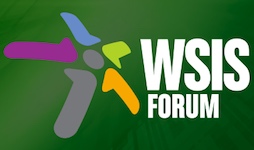Getting the jump on big data and IOT for SDGs
16 Jun 2017 11:00h - 12:45h
Event report
[Read more session reports from WSIS Forum 2017]
The session, moderated by, Dr Alireza Yari (Head of information Technology Research Faculty at Iran Telecom Research Center) addressed how to harness the Internet of Things (IoT) and big data to realise the sustainable development goals (SDGs).
Mr Hojatollah Modirian (Managing Director, Arianous ICTD, Artificial Intelligence (AI) Specialist and International Activist in the Information Society) reiterated that the SDGs are a universal call to action to end poverty, protect the planet, and ensure prosperity for people. Regarding Arianous ICTD, Modirian mentioned its earliest consultancy to the government of Iran, and its focus on empowering civil society. He stated that in sustainable development, mankind must meet current needs without compromising the ability of future generations to meet their own needs. He presented findings from the World Wide Fund for Nature’s (WWF) Ecological Footprint Calculator, and stated that there was an ecological debt given due to carbon footprints, economic and environmental impacts of climate change, and greenhouse gas emissions. He underscored that change of the status quo, and a return to natural consumption levels, was possible but depended on lifestyle transformation at personal, organisational, and global levels.
Regarding SDGs and technologies, Modirian referred to two aspects: limits of both ecosystems as a result of the state of technology and social organisation, and the possibility of achieving sustainability as result of changes to technology and social organisation. He attested that IoT is a new movement that could comprise one billion people, one million e-businesses, and one trillion intelligent devices.
Yari presented technology trends between 2015 and 2017 according to Gartner. He focused on intelligence, including the development of smart machines and adaptive systems. He also presented Cisco’s concept of the Internet of Everything (IoE), where everyone and their data will be connected via the Internet. He elaborated on IoE architecture and named its components including physical devices with sensors, network devices/connectivity, data elements, data in motion, data accumulation, data abstraction, and application. He said that big data was challenging, as the concept has no standard definition, and requires new algorithms and techniques for handling. He then compared methods between conventional and big data, putting into perspective the nuances of data capture, data analysis, and data management. He posited that big data played a better role than conventional data in monitoring SDGs, although monitoring was weighted more towards social impacts. He reviewed big data roadmaps from Iran, Europe and the USA, in which alignment with specific SDGs was explicit.
Mr Keith Mainwaring (Independent Consultant and Partner at Arianous ICTD, specialising in Telecommunications Standardisation and Policy, Technical Leader in Cisco Systems) emphasised the two-way relation between big data and IoT on the one hand, and regulation on the other. Mainwaring provided definitions of big data and IoT, and highlighted the main regulatory concerns of both. Regarding regulation for big data, he reviewed various conventions addressing data protection and privacy, including the United Nations Declaration on Human Rights, the European Convention on Human Rights, and other instruments from the European Commission. He highlighted key European principles for data protection including consent, full knowledge of data use, and restrictions on collecting sensitive data. He cited a publication from a Swedish authority comparing conventional data treatment with big data, and affirmed that approaches were incongruent. He listed techniques and nuances in securing big data including anonymisation, pseudonymisation, encryption, and coordination at national and international levels. He listed new regulations for handling personal data, regulation on new surveillance methods, self-regulation, and industrial codes of practice.
Regarding IoT regulation, he attested it was similar to big data regulation but included telecommunications issues such as, inter alia, licensing, spectrum, type approval, roaming, and liability. He emphasised that IoT regulation was more extensive than the mandates of telecommunication authorities. He addressed IoT security, and mentioned guidelines from the Global Services for Mobile Communications Authority (GSMA). He also referred to cybersecurity practices undertaken by countries.
Mainwaring then looked at ways in which big data and IoT can support regulatory activities, including object tracking and fraud identification. He listed a range of IoT applications to support the SDGs including smart cities and homes. He reiterated the need for wide stakeholder engagement, and for ensuring that information was not misused.
by Kevon Swift
Related topics
Related event

